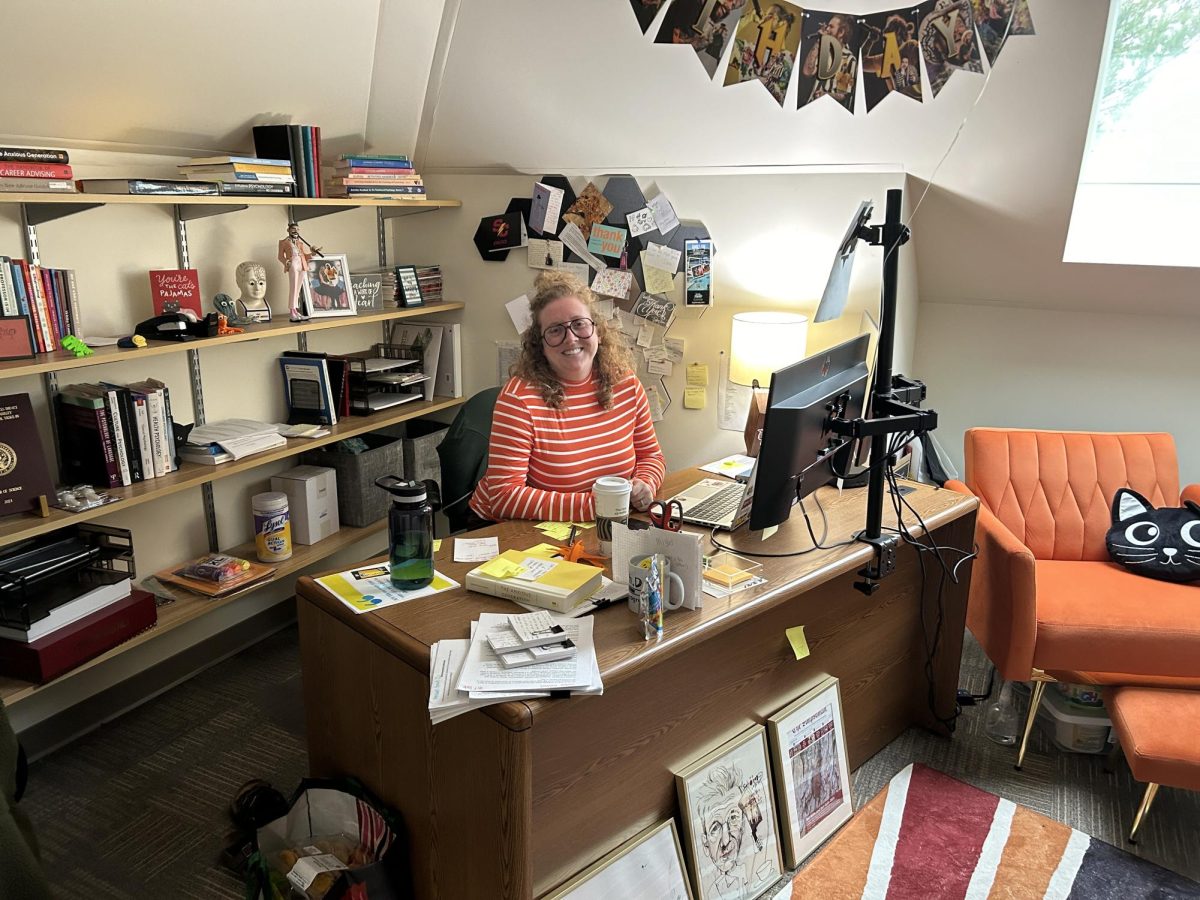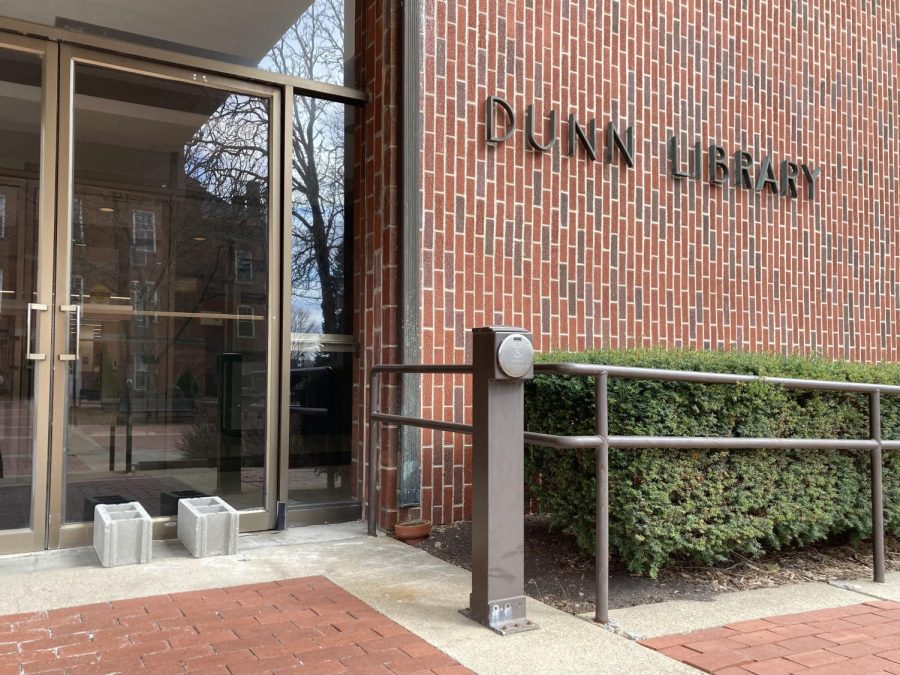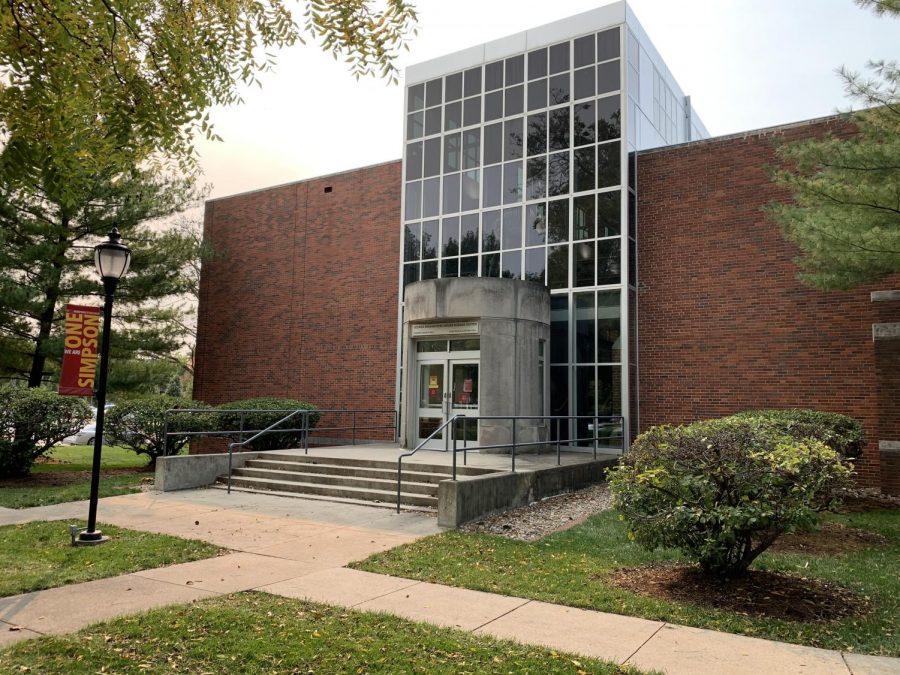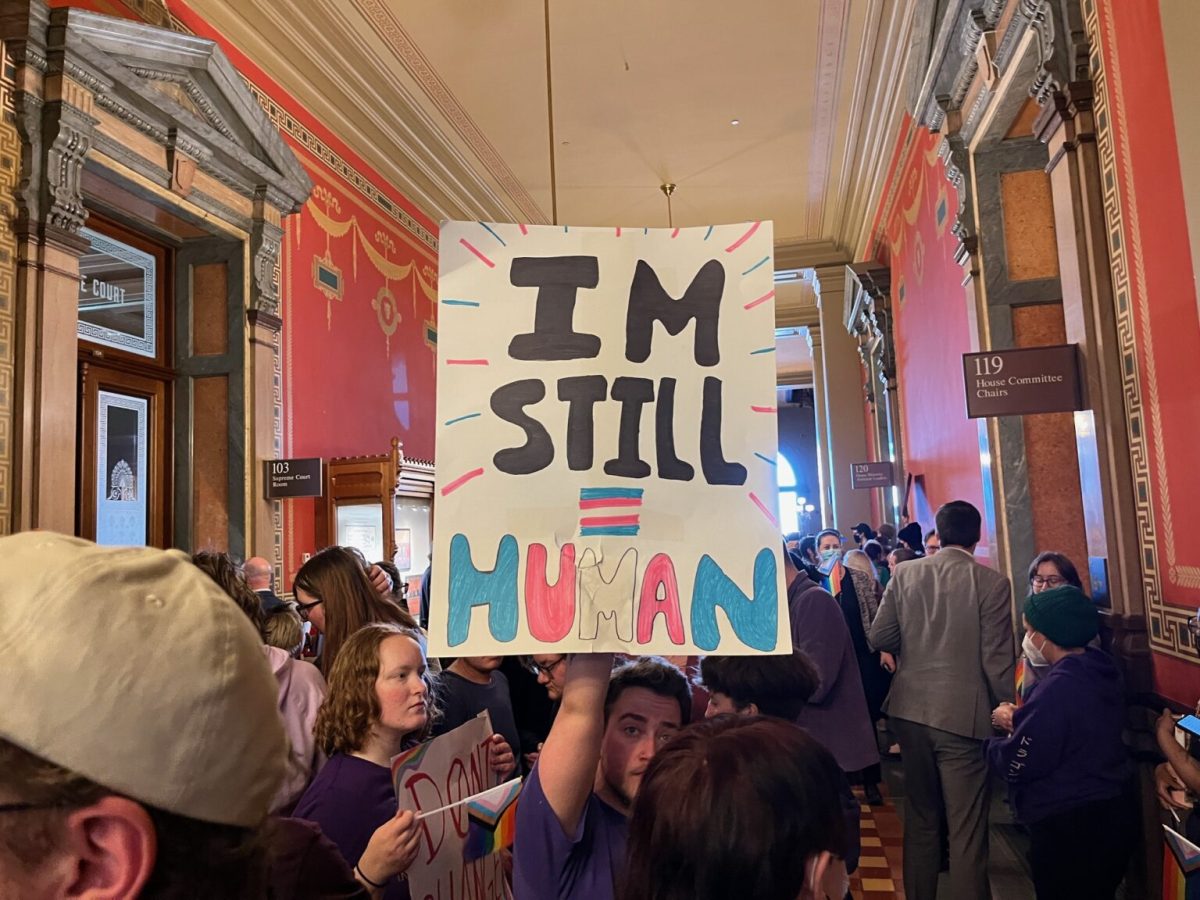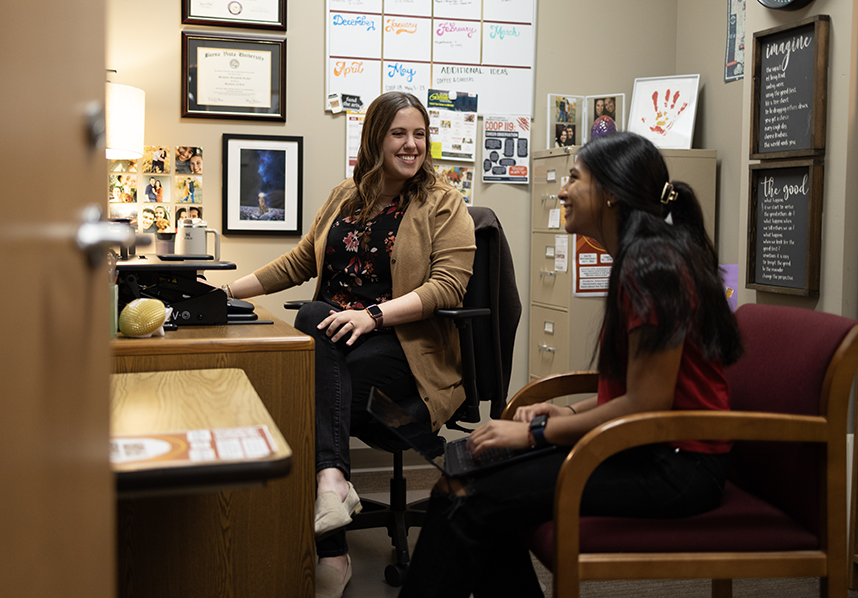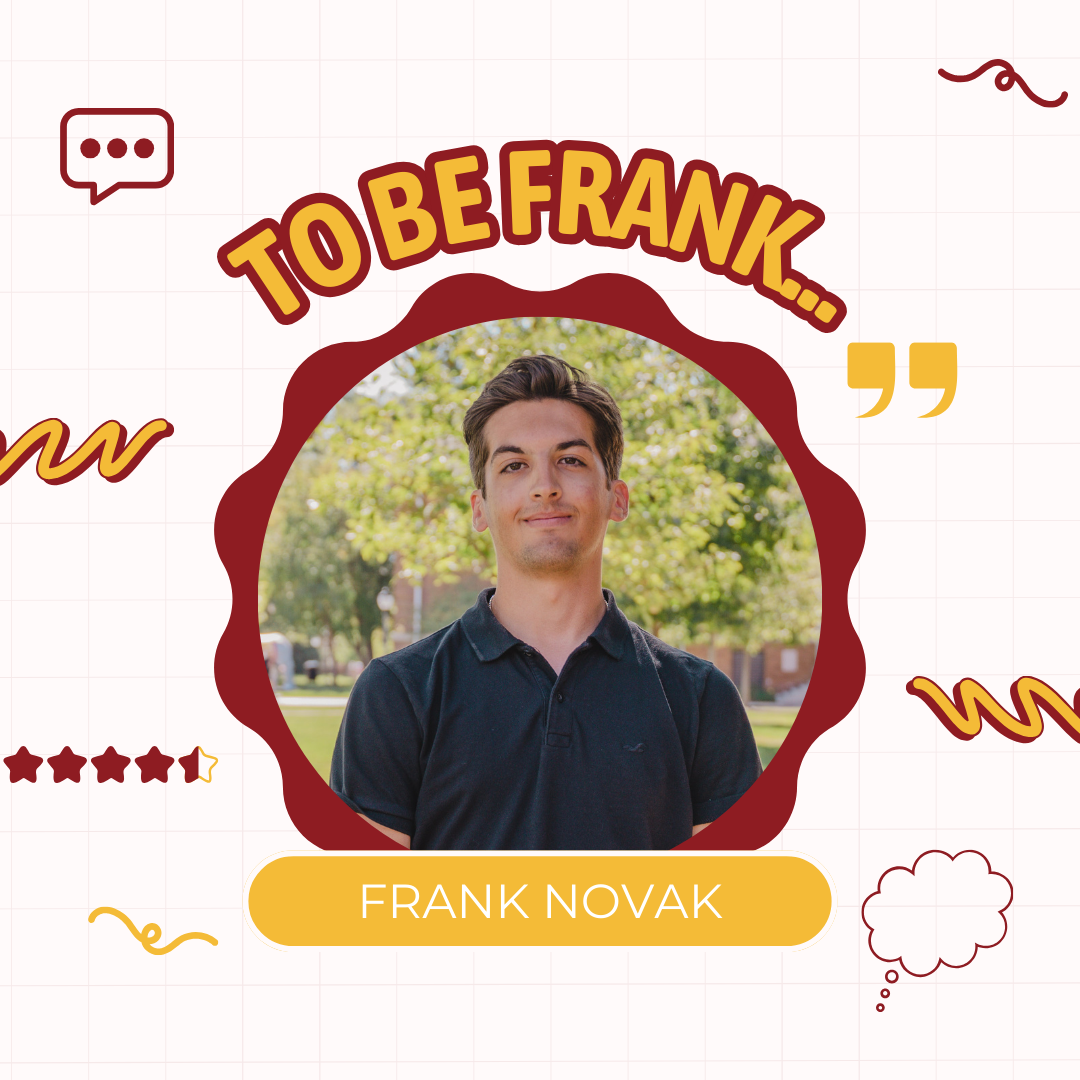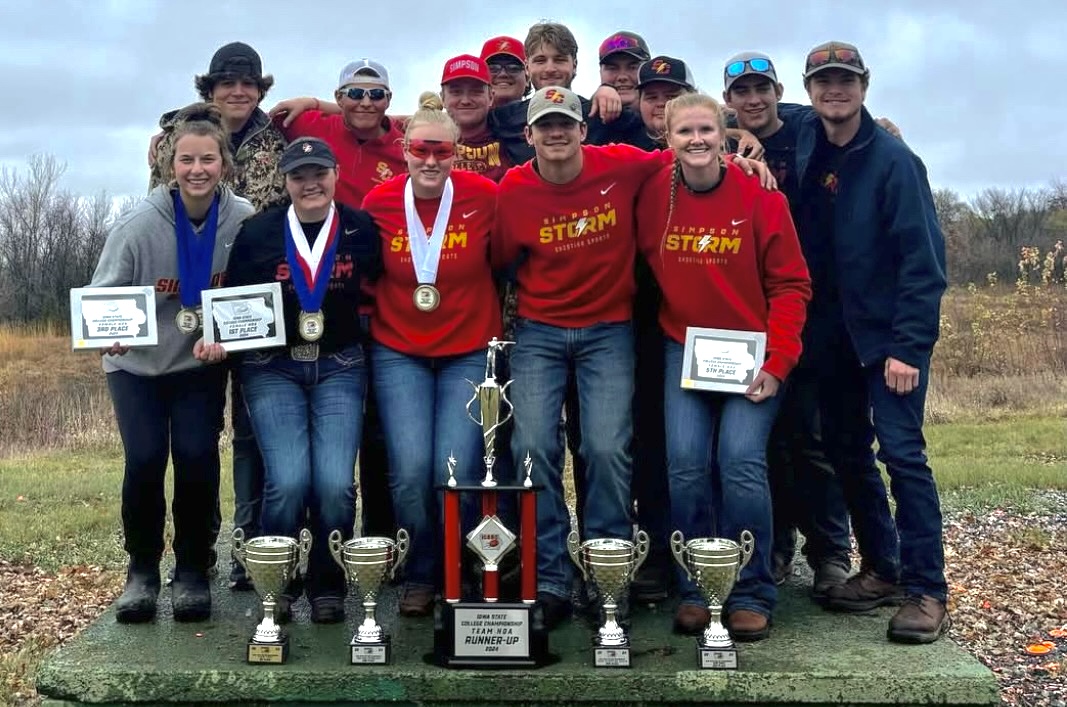Hayley Abourezk-Pinkstone, assistant professor of economics at Simpson College, has office hours Tuesdays from 9 a.m. to noon, Wednesdays from 3:15 to 4:15 p.m. and any time by appointment. You may not have Abourezk-Pinkstone as a professor, but every professor at Simpson has office hours and wants you to use them.
Abourezk-Pinkstone said office hours are a time for students to come and get their questions answered, bond one-on-one and build rapport with a professor.
“It’s a mix of helping them out with whatever they might need help on in terms of their academic work, but also getting to know them as an individual a little bit more so that I can serve that [mentor] role,” Abourezk-Pinkstone said.
Developing a personal relationship with professors expands networking opportunities, and according to Abourezk-Pinkstone, professors are more inclined to write letters of recommendation or work with students on external career goals in the future.
Taylor Vargo, instructor of psychological science, hopes to clarify that office hours are solely for students and professors enjoy it when students utilize them and drop by their office.
“There was a trend a while back to start calling them student hours instead of office hours because people thought that office hours just meant we were in our office working, not that we were actually there like for students,” Vargo said. “But I do always tell students that this is time I set aside for you. If you don’t come, you’re not using the resources that are available to you, so you should be taking advantage of those.”
The purpose of attending office hours stretches beyond asking a narrow question. Students can meet with professors one-on-one to review a subject in general, discuss opportunities in their related programs, or simply get to know their professors on a deeper level.
Vargo said she wanted a job at Simpson because of the potential to have personal connections with students and be a direct part of their learning inside and outside the classroom. She said office hours are a low-stakes way to do that, and just being in a professor’s office is beneficial.
“I have a lot of upper-level students that have been, like body doubling during my office hours, and that seems to really be useful for them,” Vargo said. “So they’ll come in and just put headphones on and sit down and won’t say a word to me, but they’ll just be here, and that seems to work. So it’s time for them, time for students to do what they need to.”
Although bonding with a professor outside of the classroom is a primary benefit of office hours, their biggest role is to help students excel in their classes and clarify any confusion. Abourezk-Pinkstone wishes to help students master the material, whether they’re not sure how to start on an assignment or they want to confirm the work they’ve already done.
“You can be as lost or as sure about the problems and still benefit from being here because you know those conversations are going to look different depending on where you are, but we’ll still be able to make progress regardless of that,” Abourezk-Pinkstone said.
Many professors have whiteboards and other collaborative tools in their offices to walk through problems and questions with students hands on. Meeting face-to-face allows professors and students to work side by side so students can receive immediate feedback on their understanding of the topic.
“If you’re really lost on homework or a problem that you’re working on, having the ability to work through it with someone step-by-step, right on the board, I think is hugely valuable,” Abourezk-Pinkstone said. “I think that’s the biggest perk of office hours, is it’s individualized, where we can work on something in the approach that makes the most sense to you, at the speed that works the best for you, taking sort of as much time and detail as you want.”
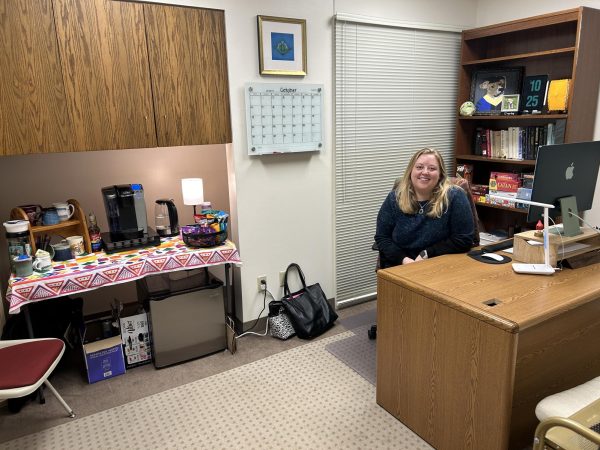
Many professors like Vargo and Abourezk-Pinkstone are happy to work with students to find a time outside of office hours that fits their schedules. Many offer flexible appointments and meeting times, whether it be in person or through Zoom.
“I have a pretty open-door policy,” Vargo said. “As long as I’m here, you can stop in and chat any time.”
Vargo also started “Teatime with Taylor,” where she goes to places like Holy Grounds and encourages students to meet with her there if they want to. She hopes to break down the barrier and fear of having a conversation outside of the classroom and inspire students to meet with her at least once so they are more likely to reach out again.
“I just go, grab myself a chai, I hang out, take whatever work I have to do, and I tell students that I’ll be there if coming to the actual office is too intimidating,” Vargo said.
Interacting with professors in a more relaxed environment can make asking questions less intimidating. Vargo said when she’s in her office, she steps out of teaching mode and remains more laid-back, leading to more natural and friendly interactions.
Professors often decorate their offices in ways that make coming to office hours more comfortable and welcoming. Vargo said she tries to make her office as unserious as possible, with personal items that bring her joy, lounge furniture, students’ work and pictures and many bright colors. She attempts to create a “coffee shop vibe” in her office with dim lights, music playing in the background and a complimentary candy bowl.
Abourezk-Pinkstone decorated her office with pictures of her hometown to spark conversation and get to know students better. She also has a coffee bar, snacks and a “take what you need” drawer with school and personal supplies to make her office feel cozy and accessible, as well as show students she cares about them as a person.
Abourezk-Pinkstone also wants students to know they are never a burden for coming to office hours because the time is specifically set aside for students.
“We as professors absolutely want to see our students in here,” Abourezk-Pinkstone said. “I’m sad when I have office hours and no one comes, especially if I come to campus just for that, so we very much enjoy having the students here.”



